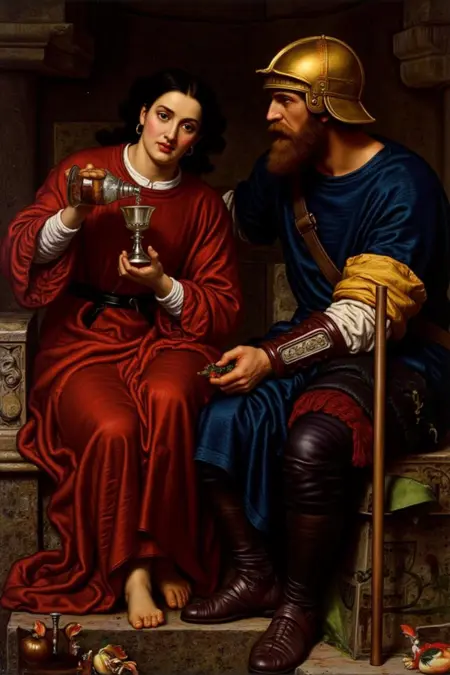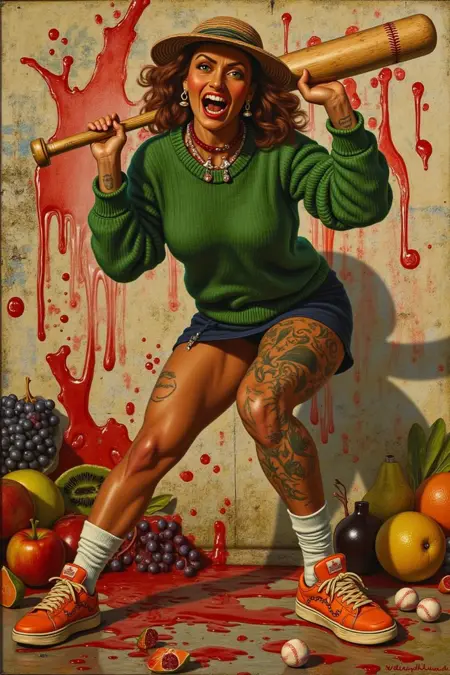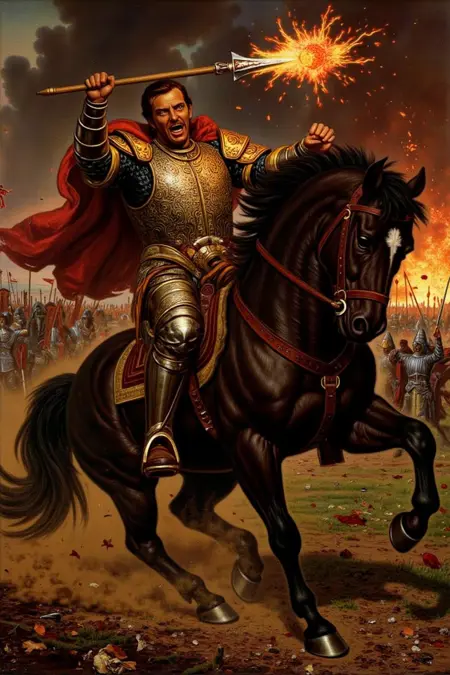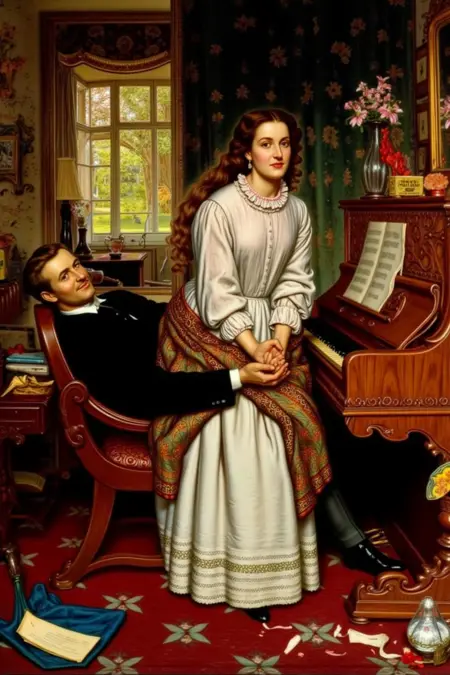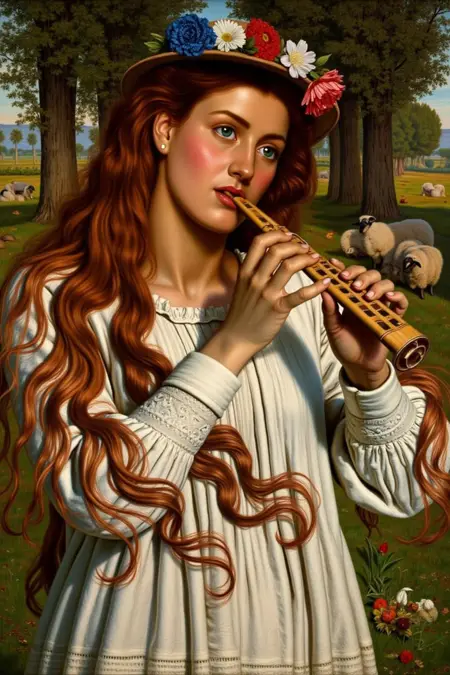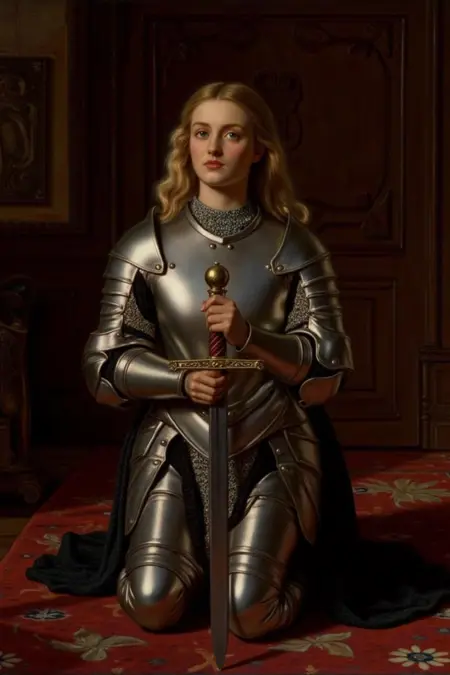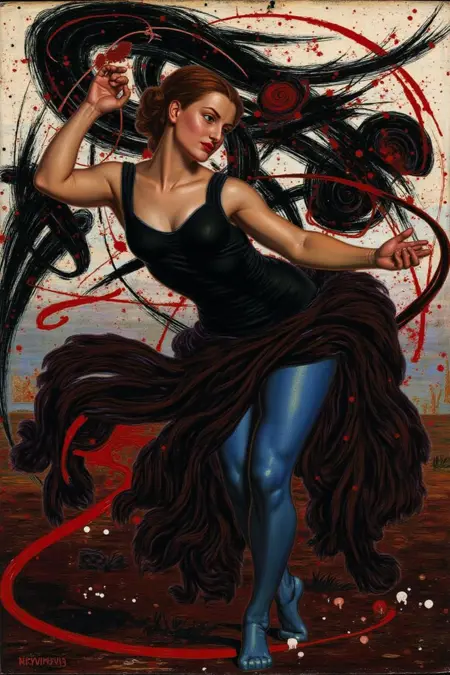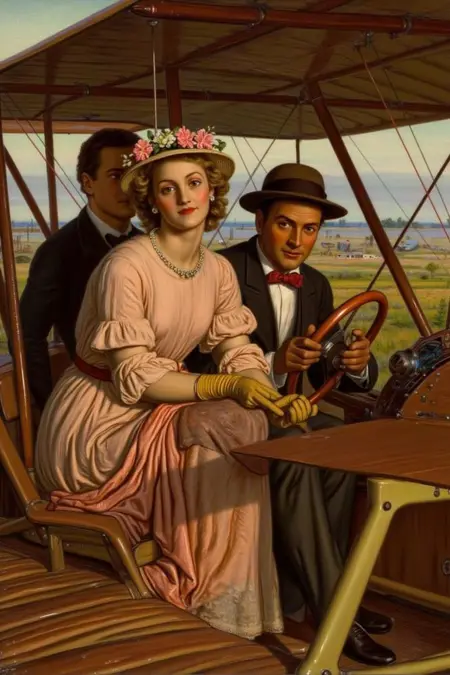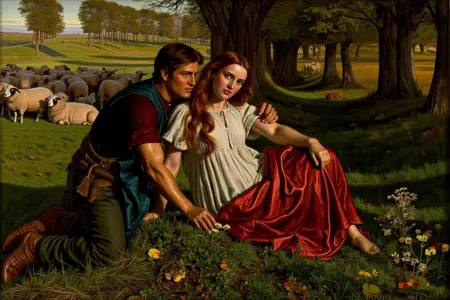Pre-Raphaelite Brotherhood: William Holman Hunt Portrait Style
Details
Download Files
About this version
Model description
Trained on 19 paintings by Pre-Raphaelite Brotherhood member William Holman Hunt OM (2 April 1827 – 7 September 1910). To see his works, please go to
From ChatGPT
 Self-portrait, 1867, Galleria degli Uffizi, Florence
Self-portrait, 1867, Galleria degli Uffizi, Florence
William Holman Hunt OM (2 April 1827 – 7 September 1910) was a prominent English painter and one of the founding members of the Pre-Raphaelite Brotherhood, a group of artists who sought to reform British art by returning to the rich detail, vibrant colors, and symbolic depth of medieval and early Renaissance painting. Hunt is best known for his meticulously detailed, symbol-laden works that often explore moral and religious themes.
Early Life & Artistic Beginnings
Born: April 2, 1827, in London, England.
Hunt trained at the Royal Academy of Arts, where he grew frustrated with the prevailing academic style.
In 1848, alongside Dante Gabriel Rossetti and John Everett Millais, Hunt co-founded the Pre-Raphaelite Brotherhood (PRB), a group dedicated to creating art that was truthful to nature, emotionally rich, and morally instructive.
Key Artistic Traits & Style
1. Meticulous Detail
Hunt’s works are characterized by hyper-detailed realism, often achieved through careful observation and labor-intensive techniques.
He painted en plein air (outdoors) to capture the true light, color, and texture of his subjects.
2. Symbolism & Allegory
- Hunt believed that art should carry moral messages. His paintings are often filled with religious symbols and spiritual themes that require close examination to fully appreciate.
3. Vibrant Colors & Rich Textures
- Inspired by the luminous colors of early Renaissance painters like Jan van Eyck and Giotto, Hunt used rich hues to heighten emotional impact.
Notable Works
The Light of the World (1853–54) One of Hunt’s most famous works, depicting Christ holding a lantern, knocking on a door overgrown with vines, symbolizing the human soul closed to divine guidance.
The Awakening Conscience (1853–54) A powerful moral allegory showing a woman rising from her lover’s lap, her face illuminated as she realizes the error of her ways. The objects in the room carry symbolic meanings of spiritual awakening and repentance.
The Scapegoat (1854–56) Painted during his travels in the Holy Land, this dramatic work shows a goat cast out into the wilderness, symbolizing the sins of humanity. The painting reflects Hunt’s dedication to biblical accuracy and symbolism.
Isabella and the Pot of Basil (1868) Inspired by John Keats’ poem, this haunting work depicts a grieving woman clutching a pot containing her murdered lover’s head. The intense emotion and detail reflect Hunt’s narrative focus.
Travels & Influence
Hunt’s deep commitment to historical and biblical accuracy led him to travel extensively, particularly to the Middle East and Holy Land, where he studied the landscapes, architecture, and cultural details to ensure authenticity in his religious paintings.
These travels inspired his series of Biblical scenes, blending realism with powerful symbolic storytelling.
Relationship with the Pre-Raphaelite Brotherhood
Hunt’s vision aligned with the PRB’s goal of rejecting academic painting in favor of truthful, unidealized portrayals of nature.
While Rossetti leaned toward mysticism and Millais shifted to portraiture and social realism, Hunt remained deeply committed to the moral and religious ideals that had driven the PRB’s founding principles.
Later Life & Legacy
Hunt’s career flourished for decades, and he became one of the most celebrated artists of his time.
In 1905, he published his autobiography, "Pre-Raphaelitism and the Pre-Raphaelite Brotherhood", chronicling the movement’s origins and philosophy.
Though his popularity waned with the rise of modernism, Hunt’s work remains celebrated for its technical brilliance, symbolic complexity, and spiritual depth.
In Summary
William Holman Hunt’s unwavering dedication to moral storytelling, symbolic detail, and luminous color defined his role in the Pre-Raphaelite movement. His deeply spiritual and visually striking works continue to resonate with viewers, reflecting his belief that art should inspire reflection and uplift the human spirit.

